Posts Tagged: love
What a Day! 2-22-22
Do good things come in twos? Well, yes. Today, 2-22-22, is a palindrome day. The numbers read the same way backward as they do forward. And it...
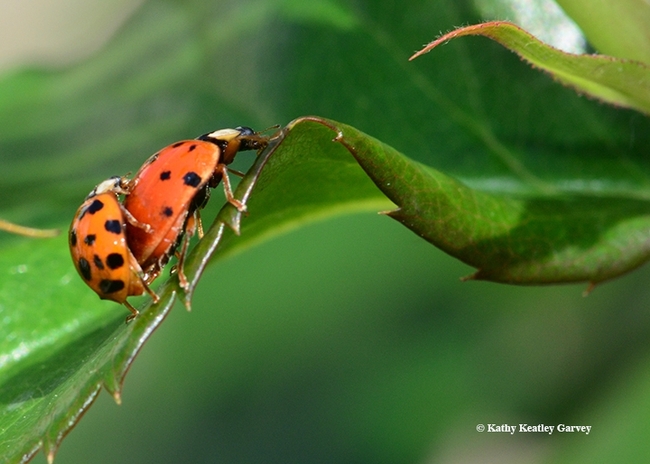
Lady beetles, aka ladybugs, keeping busy. (Photo by Kathy Keatley Garvey)
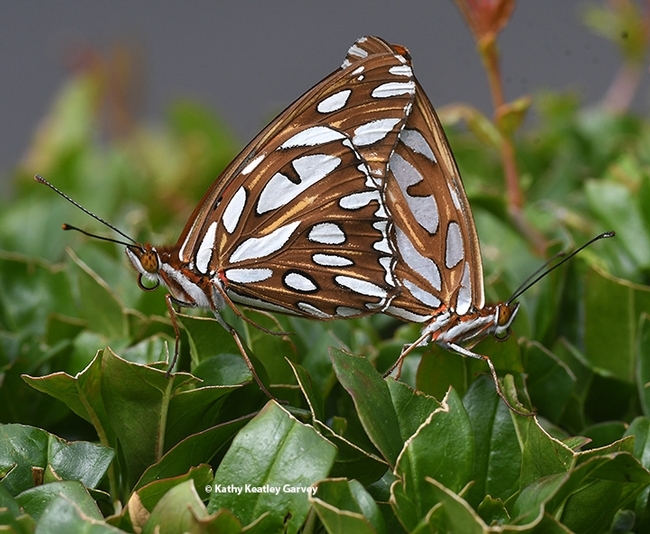
Gulf Fritillaries make a fantastic twosome. (Photo by Kathy Keatley Garvey)
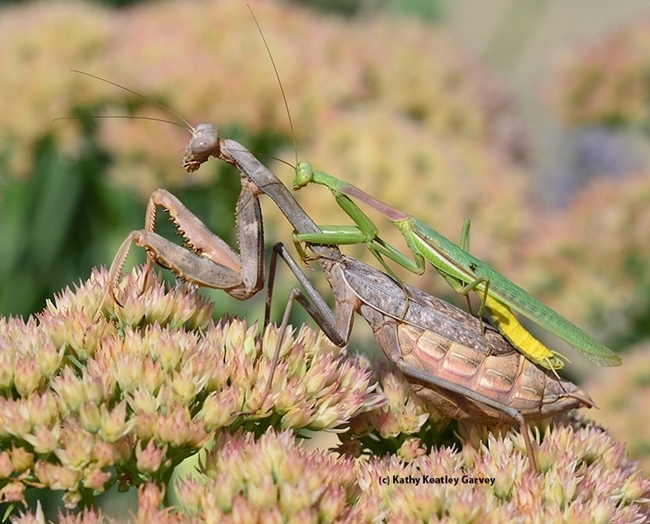
Praying mantids as a couple. Note: the male did not lose his head, only his heart. (Photo by Kathy Keatley Garvey)
Ever Seen a Honey Bee Foraging on a Daffodil?
Ever seen a honey bee foraging on a daffodil? In the early spring, blooms are few and far between. Daffodils are not usually considered "bee...
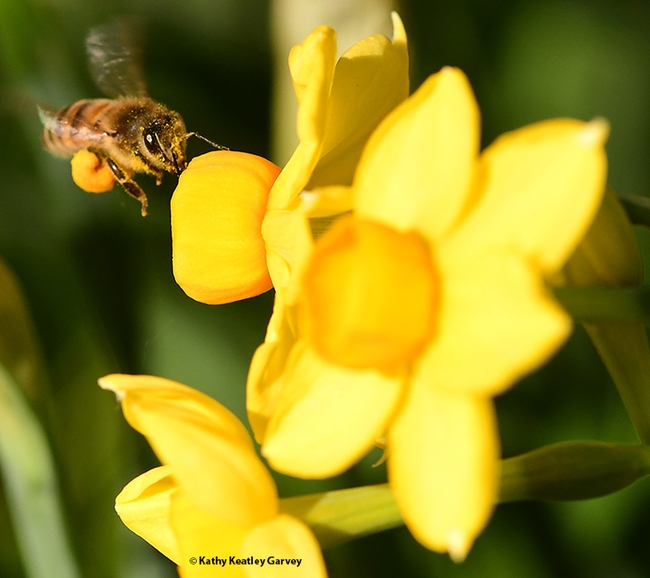
A pollen-packing honey bee heads a patch of daffodils on the UC Davis campus. (Photo by Kathy Keatley Garvey)
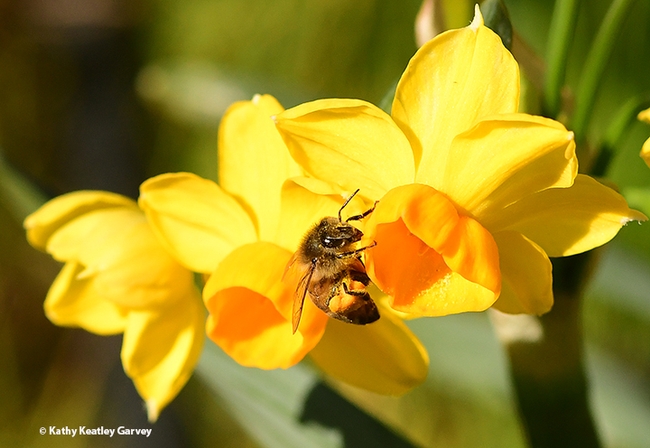
A honey bee adjusts her load of pollen. (Photo by Kathy Keatley Garvey)
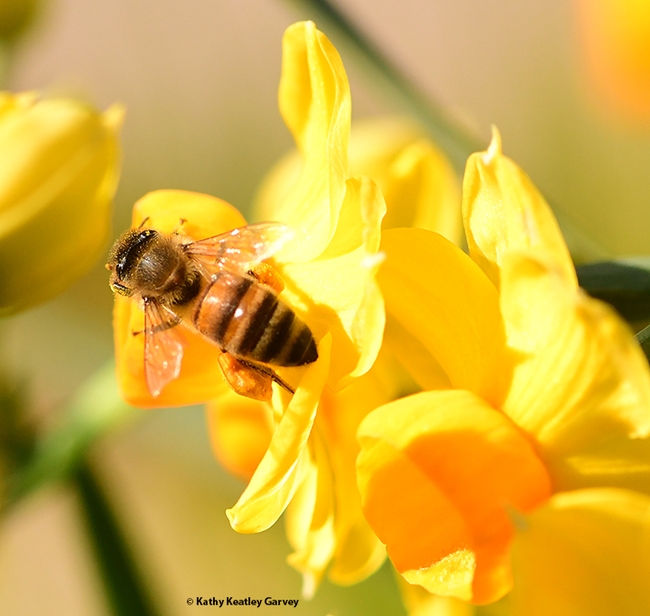
A golden honey bee with a load of golden pollen from golden daffodils. (Photo by Kathy Keatley Garvey)
Why Love Is Like a Butterfly
Love is like a butterfly A rare and gentle thing --Love Is Like a Butterfly, Dolly Parton When Dolly Parton penned her song, "Love Is Like a...
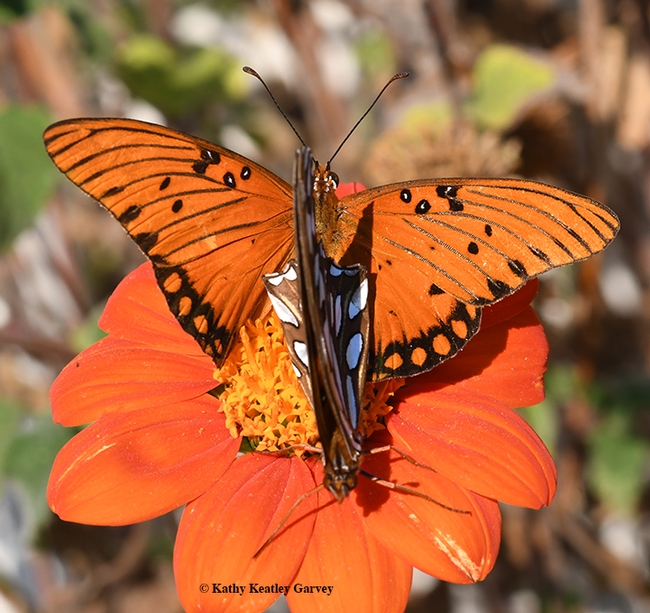
Two Gulf Fritillaries meet on a Mexican sunflower, Tithonia rotundifolia. (Photo by Kathy Keatley Garvey)
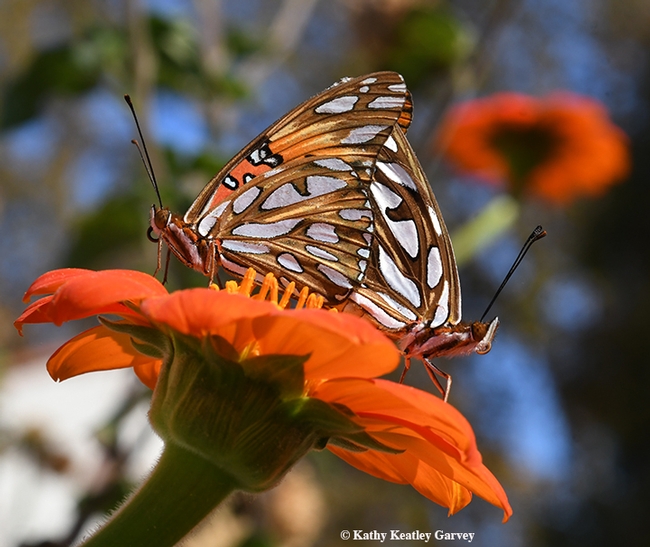
The Gulf Fritillaries become one, or as the Bohart Museum of Entomology scientists hear often, "this is a two-headed butterfly." (Photo by Kathy Keatley Garvey)
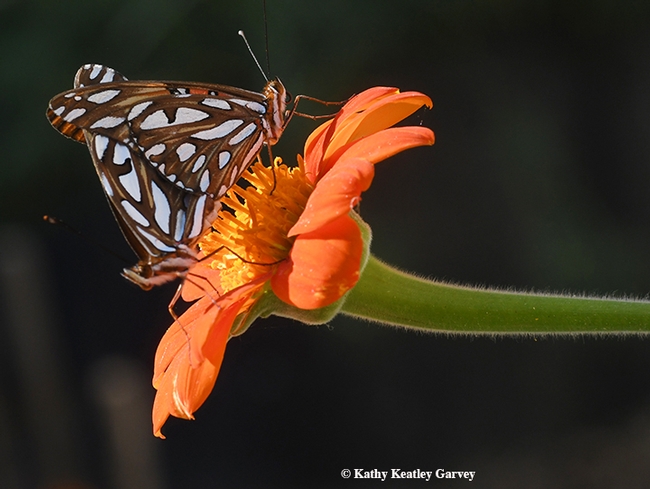
Gulf Fritillaries on a Tithonia--ignorning the photographer. (Photo by Kathy Keatley Garvey)
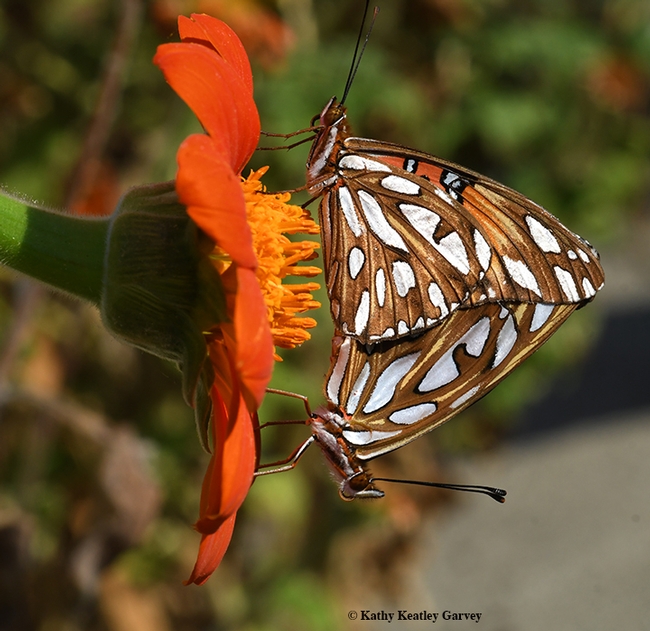
In insect wedding photography, the angles are important. Gulf Fritillaries on a Tithonia. (Photo by Kathy Keatley Garvey)
Check Out the Open Farm Day in Vacaville on Saturday, Aug. 4
What's life like on the farm? If you're looking for something to do on Saturday, Aug. 4, the Pleasants Valley Agriculture Association (PVAA) of...
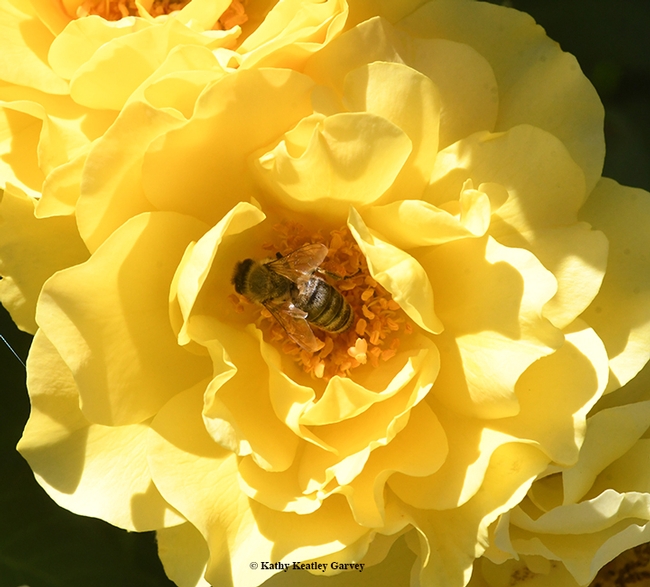
You're likely to see lots of bees at the Open Farm Tour, especially in the Morningsun Herb Farm nursery. (Photo by Kathy Keatley Garvey)
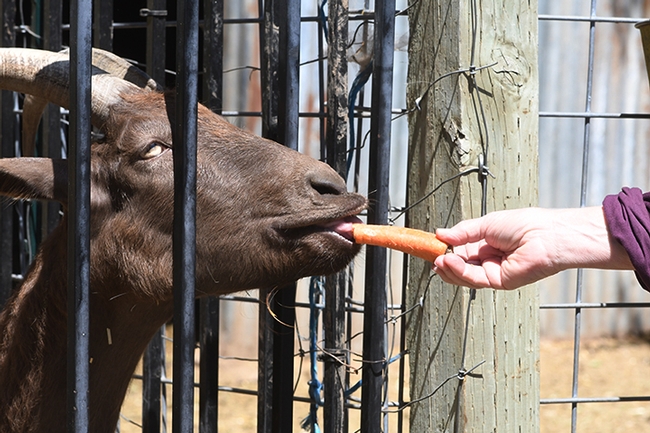
A goat at the Morningsun Herb Farm readily accepts a carrot. (Photo by Kathy Keatley Garvey)
Love Makes the World--and the Bugs--Go 'Round
Consider the lovestruck praying mantis. If you've ever watched a mating pair of mantids and seen the male lose his head, or seen other insect mating...
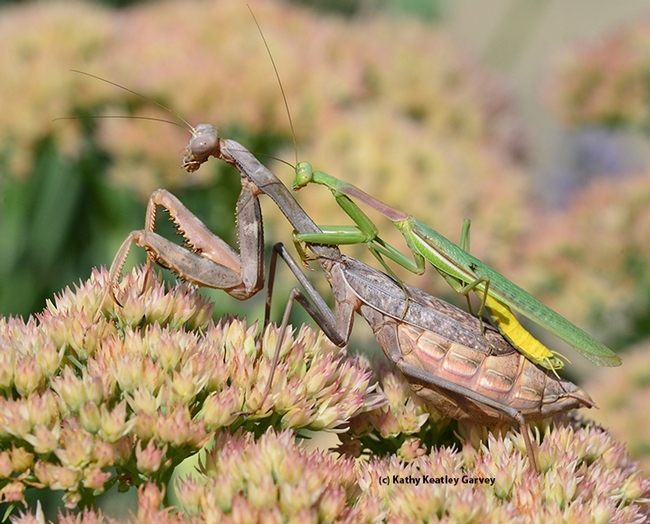
A mating pair of Stagmomantis limbata in Vacaville, Calif. (Photo by Kathy Keatley Garvey)
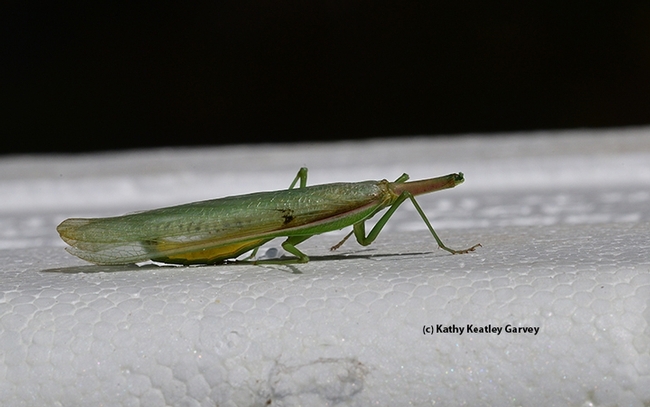
This male praying mantis, Stagmomantis limbata, has just lost his head. This one kept moving for eight hours before he expired. (Photo by Kathy Keatley Garvey)
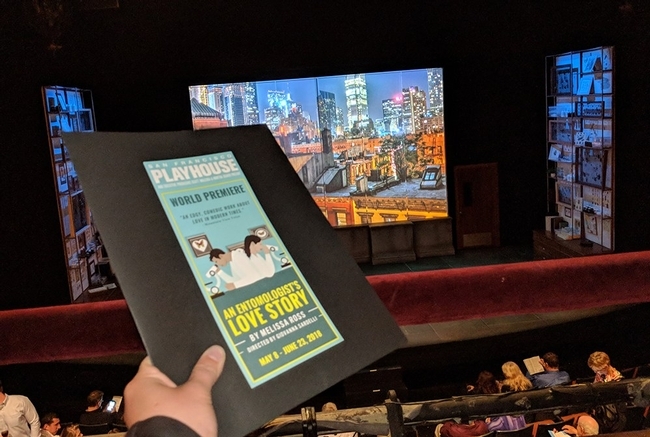
UC Davis entomologist Emily Bick with her program at "An Entomologist's Love Story." (Photo by Kathy Keatley Garvey)

